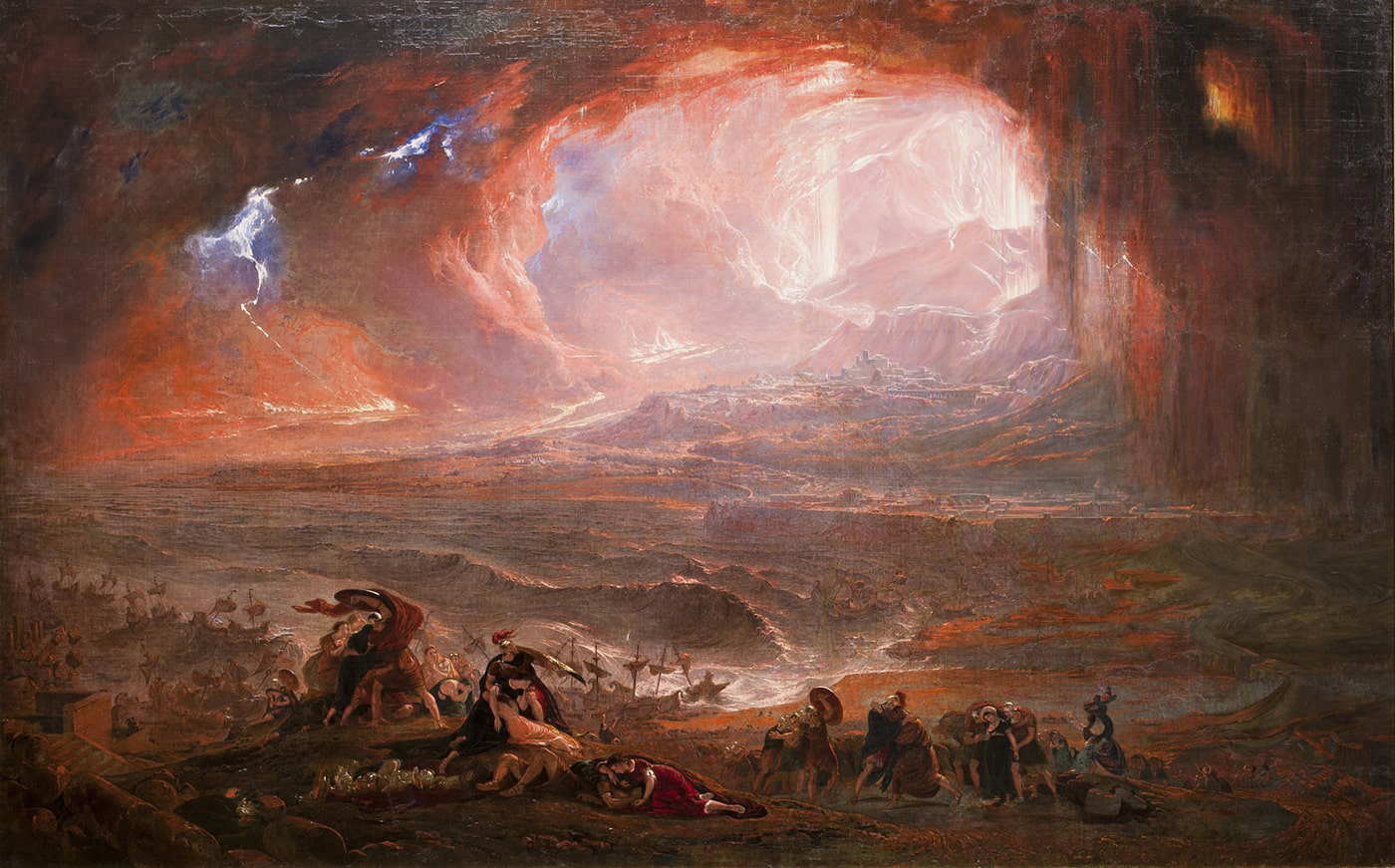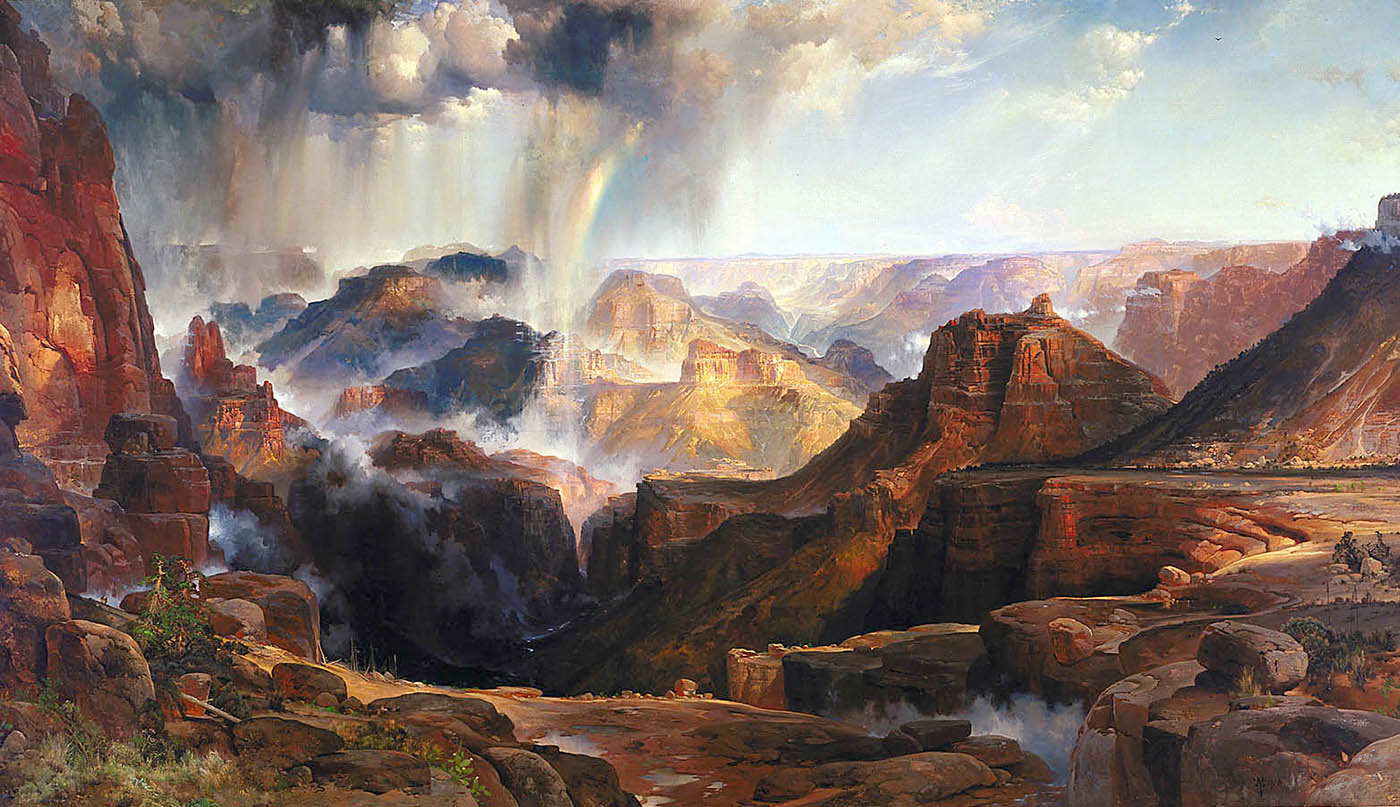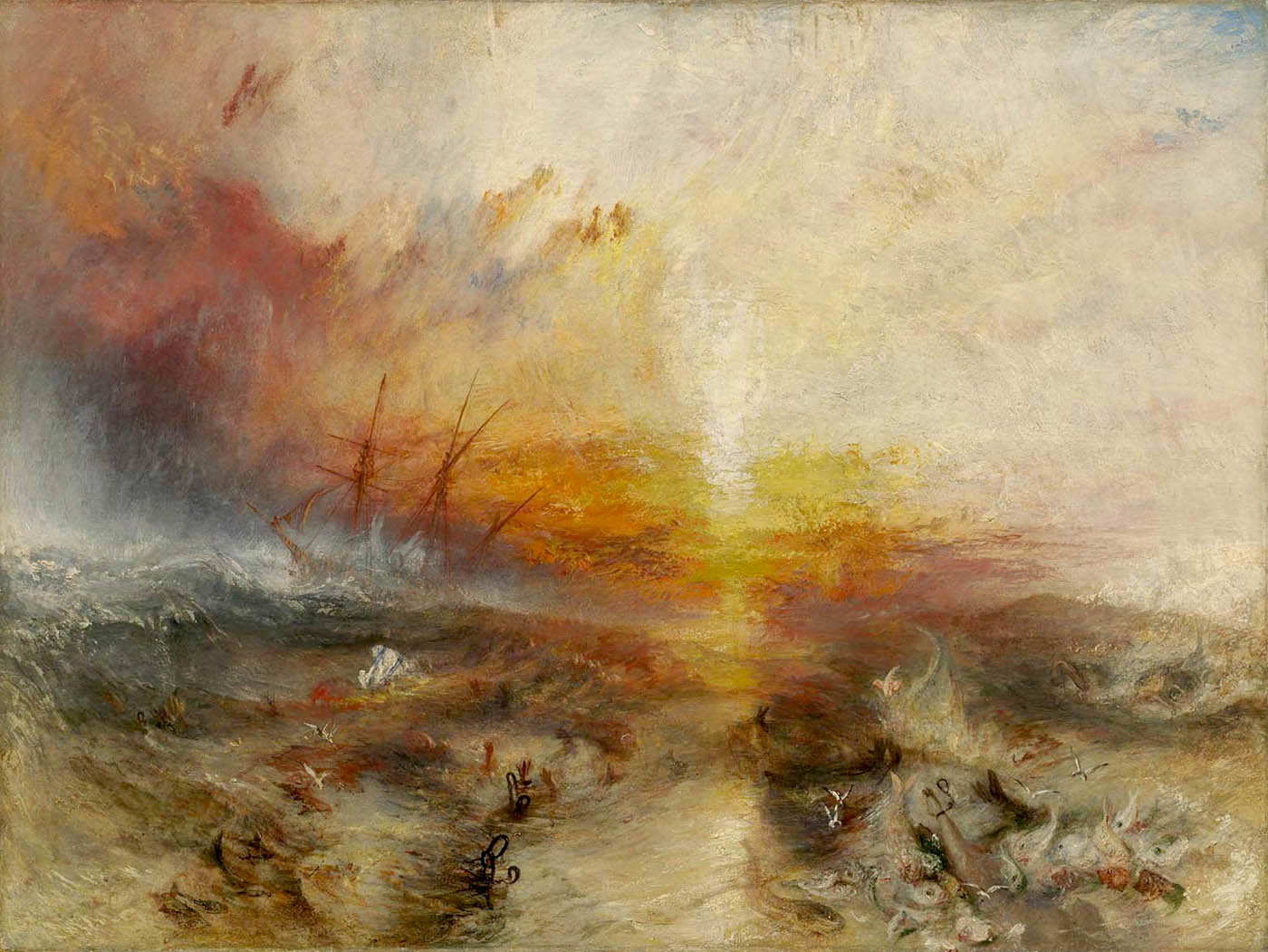
An encounter with the sublime is an experience like no other. The jaw drops, the spine tingles and the mind flounders in its attempt to make sense of things. It is unnerving yet calming, joyous and indeterminate. Yet, what exactly causes this feeling? Is it a net positive? And, moreover, how has it been interpreted throughout Western Philosophy?
The Sublime as Perfect and Evocative: Longinus

The first discussion of sublimity in Western Philosophy appeared in an essay called Peri Hupsous (translating to ‘On the Sublime’) by first-century Greek critic, Longinus. The work was a piece of literary criticism, in which Longinus applied the concept of sublimity to language and rhetoric. In particular, Longinus proposed that the “power of grand conceptions” and the “inspiration of vehement emotion” were key to sublimity as found in rhetoric (Longinus, in Brady, 2013). When these features are present, ‘elevated’ language (and thus sublimity) will result.

What distinguished Longinus’ original conception from those to come was that he considered sublimity to be a state of perfection – one that “naturally elevates us” (Longinus, in Brady, 2013). It was this idea of perfection that was to be challenged and modified over the centuries to come.
The idea of sublimity remained largely dormant after the writings of Longinus, being a concept more or less exclusive to religious thought. It was only in the seventeenth-century that the notion once more became prominent, after poet Nicolas Boileau’s translation of Peri Hupsous into French (Brady, 2013).
Mixed Emotions in the Sublime: John Dennis

English critic and dramatist John Dennis (1658-1734) expanded the concept of sublimity, approaching it from the perspective of poetry. He argued that all the things that evoke intense emotion in poetry should also be considered as evocative of sublimity. This ranged from supernatural phenomena (such as devils, witches and gods) to natural phenomena (such as earthquakes and floods).
Dennis, in contrast to Longinus, put great emphasis on the element of terror present in sublimity. For example, when recalling his experience in the Alps, during his Grand Tour, he described:
“…a delightful Horror, a terrible Joy, and at the same time… I was infinitely pleas’d, I trembled.”
(Dennis, in Nicolson, 2011).

Dennis’ conception departs from Longinus’ in two significant ways.
Firstly, Dennis expanded the category of sublimity to encompass many other things (natural and supernatural phenomena), not just language. And secondly, he brought the notion of terror and threat into his conception – thus laying the foundations for the philosophers to come.
The Sublime Versus Beauty: Joseph Addison

Soon after Dennis, English essayist Joseph Addison (1672-1719) added to the concept, distinguishing it from the beautiful in his essay On the Pleasures of the Imagination (1712). He said:
“The beauties of the most stately garden or palace lie in a narrow compass, the imagination immediately runs them over, and requires something else to gratify her; but, in the wide fields of nature, the sight wanders up and down without confinement, and is fed with an infinite variety of images, without any certain stint or number.”
(Addison, in Brady, 2013).
Addison’s conception prefigured that of Edmund Burke (1729-1797), in his assertion of the beautiful as something with strict boundaries and order, that “lies in a narrow compass.” Similarly, Addison also identified the concept of infinity as a key feature of sublimity.
Terror and Power in the Sublime: Edmund Burke

Edmund Burke’s philosophy of sublimity came after Addison’s and was arguably the first comprehensive and systematic discussion of the concept.
Previous understandings of sublimity had centered on magnitude and scale. For example, it was thought that the simple height of a mountain or endless expanse of an ocean was the feature that inspired the emotional response. Burke disagreed with this. Instead, in agreement with Addison, he argued that terror was the “ruling principle of the sublime” (Burke, in Brady, 2013). In other words, without terror, there cannot be sublimity.
In addition to terror, Burke emphasised the role of ‘obscurity’ in sublimity. By obscurity, Burke referred to that which we find difficult and incomprehensible to imagine. Incomprehensible things are that of death, infinity and eternity, among others. When we look at an ocean horizon, for example, we find it hard to conceptualise that there is no boundary to the water. These things we struggle to fully grasp in their implications, thus leaving us confused and unnerved.

Burke also asserted that power was necessary to the sublime object. The object must have superiority over the subject, in terms of power. For example, many natural phenomena are uncontrollable, such as a tornado or tsunami, and are thus more powerful than us. Therefore, sublimity stems from danger, hence its close relation to terror.
These features—terror, obscurity and power—make Burkean sublimity an uncomfortable and difficult experience as much as a pleasurable one, drawing on John Dennis’ idea of it as a “delightful horror.”
That being said, however, Burke was keen to distinguish that what makes the horror delightful is that the danger and terror are not actually threatening the subject. In other words, the viewer of the sublime object is safe from its potential danger, thus allowing for an aesthetic contemplation of it.
Mathematical and Dynamic Sublimity: Immanuel Kant’s Philosophy

As with Edmund Burke, German Idealist Immanuel Kant laid out a systematic conception of sublimity in his Critique of Judgement (1790).
Kant further emphasised the difference between beauty and sublimity. He argued that sublimity required ‘formlessness’ and ‘limitlessness,’ hence why it is often best exemplified in nature. He also distinguished between two separate categories of sublime experience: the mathematical and the dynamic.
The mathematical occurs when we try to comprehend something incomprehensible (most usually infinitude), resulting in our senses failing and reason taking their place. It is in this experience that we become aware of the limits of our senses and, in contrast, the strength of our reasoning capabilities. As Kant wrote:
“The very inadequacy of our faculty for estimating the magnitude of the things of the sensible world awakens the feeling of a supersensible faculty in us.”
(Kant, CPJ, in Brady, 2013).

How does this work in reality?
Let’s say we are looking at the sky on a cloudless night, packed full of stars. We cannot, in one glance, take in the totality of what we are seeing. In other words, we are only able to take in segments of the stars one at a time. We may try to take the whole thing in as one—for example all the stars at once—but we will soon realise that there are no boundaries in the night sky, only infinitude. In other words, a state of ‘limitlessness’ exists.
In this situation, our senses and imagination have tried their hardest to capture what we are viewing but have reached a perceptual limit. It follows from this that something of a higher capacity takes the place of the imagination and the senses, allowing us to thus understand what we are viewing. Consequently, this gives rise to a pleasurable feeling. Thus, the mathematical sublime makes us aware of “a faculty of the mind that surpasses every measure of the senses” (Kant, CPJ, in Brady, 2013).

The dynamically sublime, on the other hand, makes us aware of our freedom. It is most commonly found in nature.
As emphasised by Burke, it is danger and its potential power over us that is an essential feature of sublimity. However, what is key when experiencing sublimity is that we are safely detached from this danger. For example, viewing a storm at sea from the safety of the shore; seeing a tornado move away and dissipate on the horizon. It is for this reason that sublimity makes for a “negative pleasure,” in which we experience:
“A rapidly alternating repulsion from and attraction to one and the same object.”
(Kant, CPJ, in Brady, 2013).
If it were not for this element of safety, we could not experience sublimity, as we would be concerned only with the immediate dangers facing us. However, as we are safe, we are able to contemplate the object aesthetically. Thus, we are made aware of our freedom, being able to feel fear without truly fearing what we see.
Emancipation of the Self: Arthur Schopenhauer

Following in line with his pessimistic view of existence, German philosopher Arthur Schopenhauer attributed all suffering to a thing he called the ‘will.’ In very simple terms, the ‘will’ is that of striving and desire; it is our fundamental attachment to everything in existence. By eliminating the will from our lives, Schopenhauer thought we could reach a state of serenity and higher knowledge, similar to that of nirvana in the Buddhist tradition.
One of the ways the will can be removed, he argued, is through aesthetic contemplation. Thus, in the face of sublimity, we find ourselves emancipated from the will that causes us to suffer. As put by Schopenhauer himself:
“[I]f we lose ourselves in contemplation of the infinite greatness of the universe in space and time, meditate on the past millennia and on those to come… we feel ourselves reduced to nothing.”
(Schopenhauer, WWR, in Brady, 2013 [emphasis added]).
Sublimity thus allows us to escape the desires and pain that compose everyday life, bringing us to a state of serenity. We see the world not through the lens of a desiring individual but simply for what it is, stripped of ‘will.’ Therefore, for Schopenhauer, sublimity is also a means to objective truth.
Wilderness and Wildness: John Muir on the Sublime

As we have seen, sublimity was originally connected to perfection in rhetoric and language. Over time, it expanded to include the ineffable, such as infinity and death, and through the work of Burke and Kant became heavily associated with terror. Similarly, as a result of Kant and Schopenhauer, it also became thought of as a means to greater knowledge of the world and ourselves. Clearly, sublimity is a concept that has only continued to grow and expand since its genesis.
In the nineteenth-century, the writings of Transcendentalists, such as Ralph Waldo Emerson and Henry David Thoreau, expanded the concept of sublimity as found in nature and wilderness. However, even more influential in this area was the work of naturalist John Muir, who was responsible for grounding sublimity, in its highest form, as a thing found in wilderness.

Though Muir never outlined as comprehensive a theory of sublimity as that of Kant or Burke, this was arguably his strength. His writings centered primarily on the objects that gave rise to sublime encounters. In so focusing on the objects, as opposed to the subject’s experience of these objects, Muir avoided the criticism of anthropocentrism levied at Kant. Instead, sublimity was grounded as a characteristic of the object – e.g. the mountain range or waterfall – and not merely that of the subject’s own mind.
In contemporary philosophy, this grounding and exaltation of sublimity in wilderness has been used as a moral basis in environmental ethics for the subsequent protection of the environment (Brady, 2013).
As it can be seen, the sublime is both timeless and borderless. It is a concept, and a human experience, as old as that of love and death. And, as made clear by the German Idealists, it is something to be sought. Not only do we gain a deeper knowledge of the world through sublimity: we gain a deeper knowledge of ourselves.










